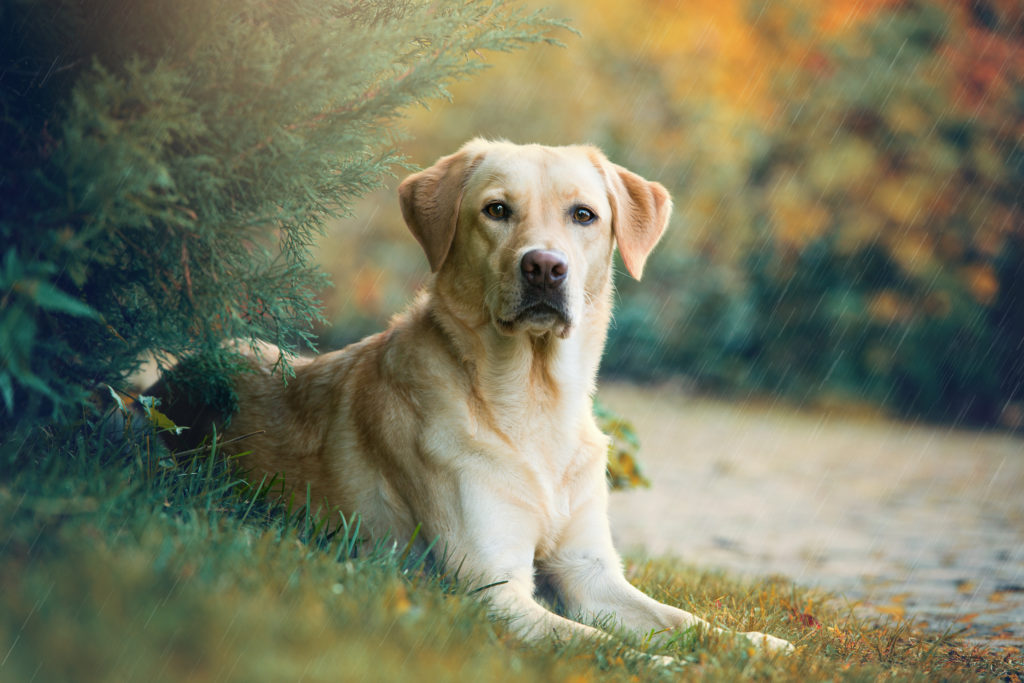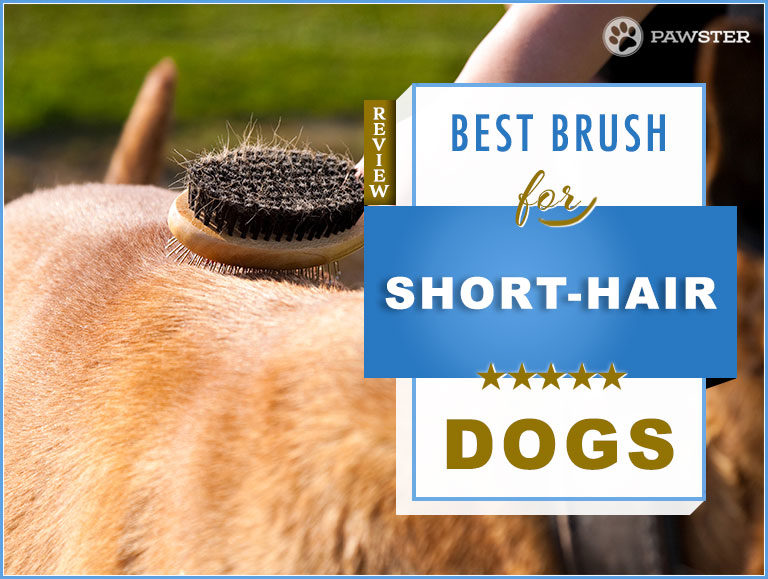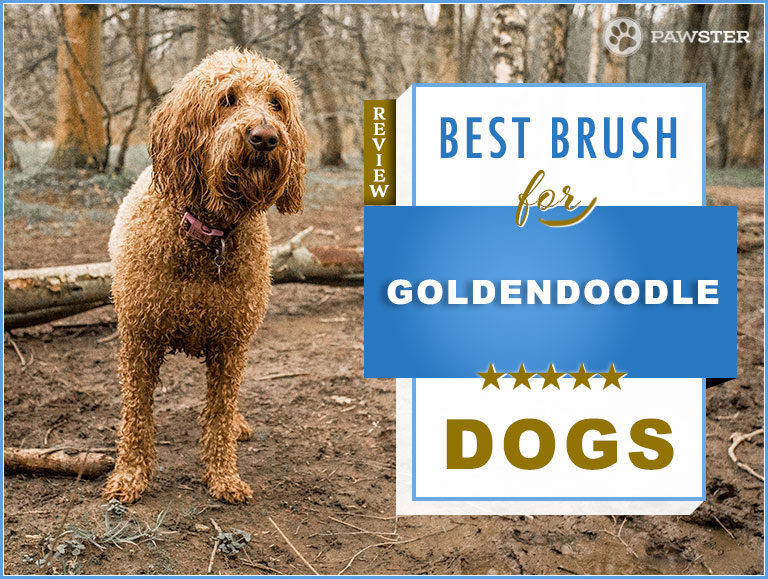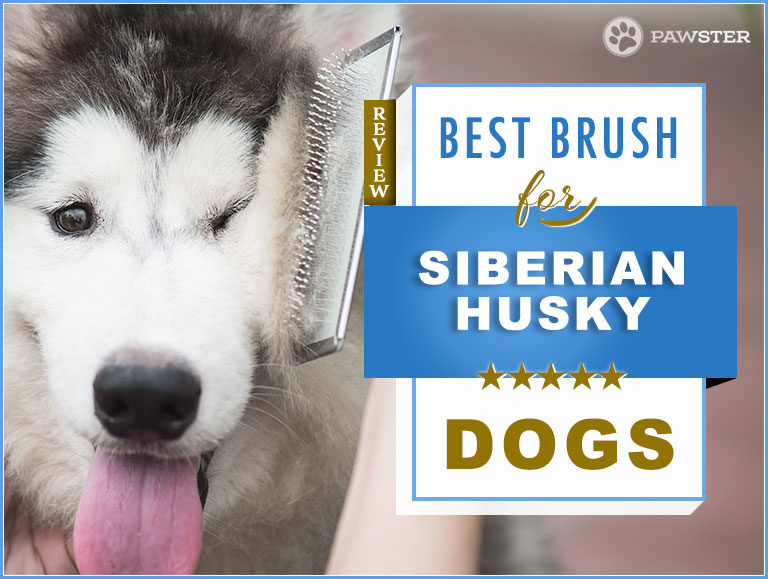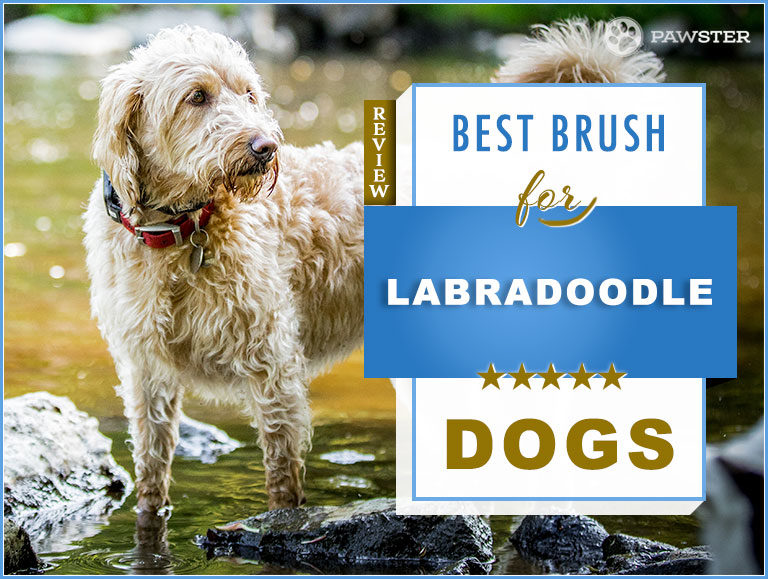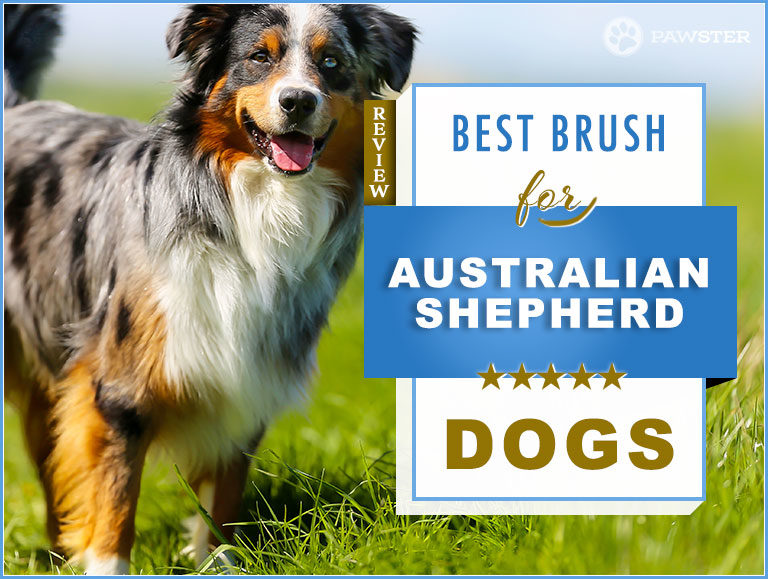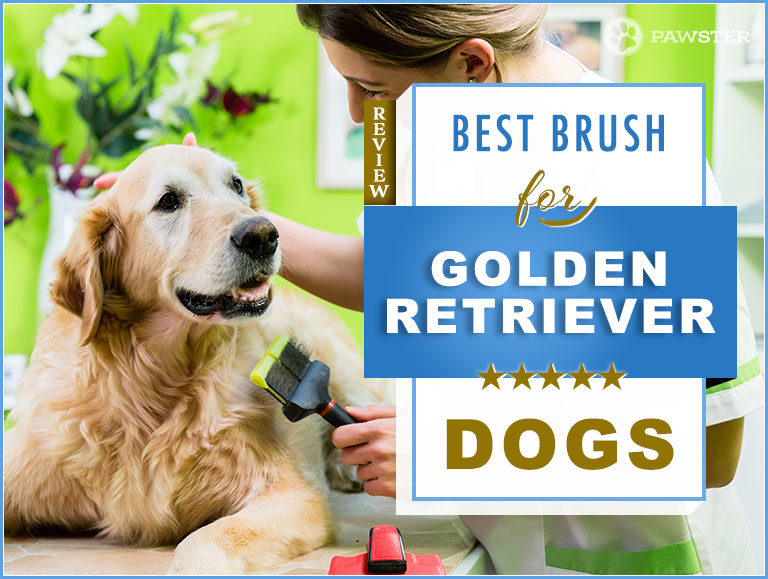Labrador Brush: 2024 Pick for Best Labrador Dog Brush

Contents of Article
Labradors have easy-to-maintain fur because it’s wash and go. They don’t require much grooming, but they do shed a lot. Never fear! We know that choosing the right dog brush is tricky because there are so many on the market. Enough to leave you wondering how different they could really be. Is it worth spending a few extra dollars?
We’ve put together this guide to help you find the right brush for your Labrador as well as provide you with some general grooming information to help you keep the coat of your buddy nice and healthy.
What is the Best Brush for a Labrador?
Different Popular Brush Types for Labradors
There are several types available that are the best brushes for Labradors.
- Bristle brush
- Rakes
- Slicker brush
- Pin brush
Also Read: 7 Best Dog Harnesses for Labrador Retrievers in 2024
Bristle Brushes
These brushes are best for smooth-coated, short-haired animals. The bristles clear debris from your dog’s fur easily and leave it nice and shiny.
Bristle brushes remove loose dog fur easily, and the bristles stimulate their skin. You can use these brushes on long-haired dogs, but if you do, you must choose a brush with longer bristles.
Rakes
Rakes are a different type of brush that easily move through thick dog fur to remove tangles and mats. Similar to a razor for shaving, rakes have pins that are positioned in two rows to remove the most tangles and loose hair possible.
This type of brush is great for dogs with thick undercoats since these animals attract large amounts of debris during the shedding season. Only rakes eliminate this debris easily. When choosing a rake for your Labrador, make sure that the pins in the rake equal the length of the fur on your dog. If the pins are too short, they can’t get to your Labrador’s undercoat.
Slicker Brushes
These brushes are best for long or medium-haired dogs. They are excellent at removing mats from their fur. Slicker brushes have fine bristles made from wire that are effective at eliminating tangles as well.
There are many kinds of slicker brushes on the market today. When looking at slicker brushes to buy, ensure that you choose one that has a handle that’s easy to use since it makes the grooming process easier. Beware when using this type of brush because the wire bristles may be uncomfortable for your pet if you apply too much pressure while brushing.
Pin Brush
Pin brushes for dogs look similar to those used by women. They are also available in an oval shape and are great for dogs with long or medium hair as well as curly or woolly coats. Pin brushes have wires with pins on top to make them useful to collect all of your dog’s loose hair before it sheds everywhere that they go.
Understanding your Labrador’s Coat
First of all, veterinarians advise that grooming and bathing are essential parts of preventative healthcare for your Labrador. This process allows you to check your dog’s coat and skin all over to see if everything is okay.
You can look for lumps, skin irritation, or anything that seems abnormal. However, don’t bathe your Labrador too frequently because it can interfere with oils in their skin that are important for hair growth and their health.
Veterinarians say that bathing your dog once a month is fine. Of course, if your lab decides to roll in the mud or something that stinks as they are apt to do, you can bathe them more often.
Their skin is a healthy component of their coat. Lab’s are prone to some genetic skin disorders. They also can get skin allergies associated with their environment and canine atopic dermatitis. Atopic dermatitis affects around 10 percent or more of Labradors.
When brushing your Lab, be gentle even if they don’t have any active skin conditions. You don’t want to scratch their skin when trying to remove debris and dead skin because it can lead to an infection or injury.
While Labradors appear to have a low-maintenance coat, it’s actually rather high-maintenance. While their coat is very short there is an abundance of fur. Lab’s have a dual-layer coat. The uppercoat is coarser and repels water while the undercoat is a softer, insulating layer.
Depending on your Labrador’s shedding patterns they may shed all year long or periodically. Both layers must shed and replenish.
Here’s an interesting fact. Every year, Labrador’s shed approximately 70 lbs. of fur. Suffice it to say that you’ll brush your Lab A LOT. Remember this when choosing a brush for your dog. You’ll want something durable and comfortable.
The best brushes for Labradors are de-shedding tools. They get down to your dog’s undercoat which is vital for Lab’s since they have double-layers. These brushes are created to remove dead hair before it falls out on your floor, furniture, or clothes.
Slicker brushes are also great to keep on hand for Labs since they remove mats and tangles. Since your Labrador’s fur is short, you probably won’t use this as often, but it is still good to keep around.
Since bristle brushes work on all coat types, this is another type of brush to use on your Lab. The longer your dog’s coat, the wider-spaced the bristles on the brush need to be. Lab parents should use this brush on their pet.
Overall Best Brush for a Labrador
| Our 2024 Picks: Best Dog Brush for Labrador: | |||
| Rank | Dog Brush | Price | Rating |
|
Overall Best |
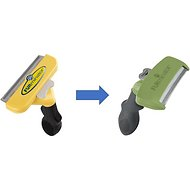 |
$$$ |
A+
|
|
#2 |
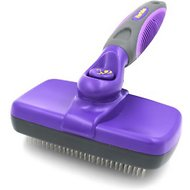 |
$$ |
A+
|
|
#3 |
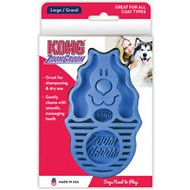 |
$ |
A+
|
|
#4 |
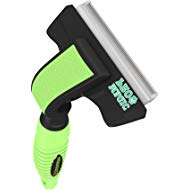 |
$$$ |
A
|
|
#5 |
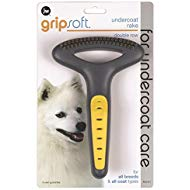 |
$$ |
A
|
FURminator De-Shedding Tool
Whether you consider this a brush or not, the FURminator made the must-have list of many Labrador pet owners. This de-shedder tackles the fur problem during your Lab’s shedding period, which as we mentioned earlier, varies. It reduces shedding up to 90 percent because it’s designed to remove dead hair from the under and topcoat.
This tool is more expensive, but it will save you tons of time cleaning your carpets and furniture when your dog sheds. When used correctly it removes loose fur without scratching your pet. Just be cautious as it can leave bald spots if you brush too aggressively. It’s the best brush for eliminating dead and loose hair.
- Easily removes hair from the top and undercoat
- It’s compact and easy to maneuver.
- Comes with a “fur ejector” button making clean up a breeze.
- Reduces shedding up to 90 percent
- Price
Hertzko Self Cleaning Slicker Brush
Best Labrador Matted Hair Brush – This slicker brush is the perfect tool to remove mats from your dog’s fur. With a comfortable anti-slip handle, it removes all of the loose hair and gets rid of trapped dirt, mats, tangles, and dander.
This brush is gentle and eliminates mats and tangles without hurting your Lab. The fine, bent-wire bristles on this brush penetrate deeper into the coat than some other brushes on the market. Deeper penetration allows this brush to groom the undercoat well yet doesn’t scratch your pet’s skin.
This Hertzko brush is simple to clean. After you’ve finished grooming, click the button on the brush and its bristles retract making it easy to remove the hair from the brush. The Hertzko slicker brush massages your pet too for increased blood circulation and a healthy, shiny coat.
- Easy to clean
- Eliminates mats and tangles easily
- Massages your pet’s skin for healthy grooming
- Durable and comfortable
- The brush is large, so it may not work well for grooming a puppy.
3 More Top Rated Brushes for Labradors
Here are three other popular brushes for Labradors
Kong Zoom Groom Rubber Wet or Dry Brush
Any pet owner with a dog who sheds heavily says this brush is a lifesaver. For as simple as it is, it collects a lot of hair and gives your Lab a massage at the same time. Using is 15 minutes a day reduces the amount of hair that finds its way around your house.
We know that dogs love to play and chew and this grooming tool engages them and keeps them ready to play. The Kong Zoom Groom has a soft mouthfeel that allows your Lab to chew on it safely and it’s incredibly durable just like Kong toys.
You can use it wet or dry as it’s great for shampooing or grooming. This brush removes loose hair easily while the massage action stimulates the capillaries in your dog’s skin. It also encourages the natural production of oil keeping your Lab’s coat and skin healthy.
- Massages your pet’s skin and coat to promote optimum health
- Removes loose, dead hair easily
- Durable and soft to chew on
- Reduces the amount of shedding
- There were a few people that said the rubber tips came off when they brushed vigorously.
HappyDogz Magic Pro Pet De-shedding Grooming Brush
Labrador owners love this de-shedding brush because it can reduce shedding by as much as 95 percent. It comes in multiple sizes, but the medium/large size is best for Labs. It will save you from excessive vacuuming and cleaning, leaving you more time to play with your pet.
It’s pet-friendly and proven to keep your dog’s coat and skin healthy and shiny. Crafted from high-grade stainless steel, this brush’s blades work on any breed but is excellent for those that shed a lot. It even comes with a lifetime guarantee from the manufacturer. Professional pet groomers and veterinarians highly recommend it.
- Pet-friendly
- Reduces shedding by up to 95 percent
- High-quality construction
- Lifetime guarantee
- The brush is a little more expensive than some brushes on the market.
JW Pet Company GripSoft Double Row Undercoat Rake Dog Brush
This bristle brush provides great value because of its low price. It’s great for a weekly routine, but not a brush that you would utilize daily. It’s actually advertised for dogs with long hair, but it’s also great for reaching their undercoat which is why Lab owners like it.
Its small so you can use it on a puppy, and it doesn’t appear intimidating. JW Pet Company’s GripSoft brush removes dead fur from your Lab’s undercoat and even loosens light matting.
The non-slip, ergonomic design has two rows of round tipped teeth. You can even use this brush on other breeds if you have more than one type of dog.
- Great price
- Easy to clean by sliding the hair off
- Compact size
- Reaches the undercoat to remove dead hair
- Some customers advised that because the brush wasn’t angled, it was a little rough on their dog’s skin.
5 Tips on Brushing Your Labrador’s Coat
Have a tough customer on your hands? New to brushing? Here are a few tips to help you:
- Begin with a pin brush. – Start with a pin brush and brush with the direction of your dog’s coat.
- Next, Brush Backward. – Begin at the base of their tail and using quick, short strokes, brush your dog’s coat backward. Make sure that the pins work down into the skin but don’t press too hard.
- Brush with the Coat Again. – The hair should be flying all over the place now. Go back over the whole coat in the same direction again.
- Finish with a Bristle Brush. Finish grooming with a soft bristle brush to distribute the oils in your Labrador’s coat. Use a damp towel to pick up stray or loose hair after brushing. Use a bristle brush twice a week since the natural oil also helps upkeep the fur’s waterproofing function.
- Keep Special Tools Around for Seasonal Shedding – When your Lab start’s shedding his undercoat, you’ll need several tools to help the process. A short-hair rake loosens the soft fluff while a slicker brush will lift out most of that dead undercoat. Following up with a fine-tooth comb to extract any additional loose hair.
FAQ:
How often should you brush a Labrador?
You can brush your Lab every day. In fact, it’s best to do that to reduce shedding. It also promotes a healthy coat and skin. Just don’t brush too aggressively or press too hard or you’ll injure your poor pet instead of giving them a good grooming and massage. If that happens, you could encounter more serious health issues.
How can I prevent my Labradors’ hair from matting?
Groom your Lab regularly to reduce the chances of matting in their fur. At the very least, brush your pet once a week. Every day is more effective though, to prevent matting. Remove small knots and cut out stubborn ones.
Bathing them regularly also helps avoid matting, but don’t bathe them if their fur is already matted or tangled as this makes those problems worse. Shampoo and conditioner alone won’t remove matting in your pet’s coat. For severe mats, a groomer can give you additional tips to replace bathing.
Feeding your Lab a healthy diet encourages healthy skin and hair. Follow dietary guidelines established by AAFCO, the Association of American Feed Control Officials. Giving them fish oil supplements also promotes a healthy coat and skin. Lack of fatty acid contributes to skin problems such as eczema.
Do Labradors have an undercoat?
Yes, Labs do have an undercoat. A rake is the best tool to get to the undercoat. If you don’t brush regularly, you’ll vacuum excessively. For multi-tasking, you can purchase a tool such as a Rake-n-Vac!
How to prevent a Labrador from shedding so much?
You love your beautiful Lab, whether they are yellow, brown, black, or silver, but you don’t love the tufts of hair floating all over your house. There is a way to reduce how much hair that you pet loses all over your furniture, and that is regular grooming.
Brush your Labrador at least twice a week. The more you brush them, the better. Use a pin or slicker brush to remove loose hair from their outer coat. Start at your Lab’s neck or back and brush in the direction of their hair growth. This brushing helps to remove the coarse hairs from the outercoat that stick to your clothes. The outercoat sheds all year long unlike the undercoat.
So, its double duty with a Lab!
The undercoat usually sheds in the Spring and Fall so comb your pet daily with a de-shedder or shed blade after using a slicker brush. Comb their entire coat and make sure that your brush or comb is long enough to reach the undercoat. You’ll have to apply some pressure but not too much.
Conclusion
Labrador dogs are fun and loving pets who enjoy a good grooming session to bond with their owner. Just make sure that its enjoyable and not a torture session by brushing too hard. If your pet enjoys their grooming, it’s a much easier process.
A Lab’s coat can be deceiving since they have short hair. Many people think that they won’t have as much problem with shedding, but the opposite is true. With an under and topcoat, Labradors are excessive shedders and if you don’t keep up with it, you’ll vacuum continuously.
Upkeep their coat and skin to maximize your dog’s health. After all, dogs are part of the family, but they do require routine grooming and a healthy diet. If you’re proactive with the process, then you’ll avoid uncomfortable and dangerous skin problems or other issues that could make your Labrador very sick.

